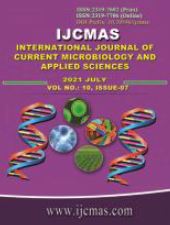


 National Academy of Agricultural Sciences (NAAS)
National Academy of Agricultural Sciences (NAAS)

|
PRINT ISSN : 2319-7692
Online ISSN : 2319-7706 Issues : 12 per year Publisher : Excellent Publishers Email : editorijcmas@gmail.com / submit@ijcmas.com Editor-in-chief: Dr.M.Prakash Index Copernicus ICV 2018: 95.39 NAAS RATING 2020: 5.38 |
Infection due to Candida species are increasing in recent decades, probable reason being increase in incidence of immunosuppression, significant risk being low absolute CD4+ T lymphocyte count. Increase in frequency of non Candida albicans species has been observed. Hence the present study was carried out to study the incidence of Candida species among HIV positive patient. Prospective study was carried on 100 HIV seropositive individuals presenting with oral thrush. Identification of Candida species was done using KOH mount, Gram’s stain and inoculated on Saboraud dextrose agar, CHROM agar and various other tests were carried out.CD4+ T cell count was done. the common age group affected was 16-45 years, with slight male preponderance. Most of the case fall either in stage 3 or stage 4. C.albicans was the predominant pathogen isolated accounting for nearly 52%, among the non albicans group the most common isolates were C.dubliensis (24%), C.tropicalis (15%), C.krusei (5%) and C.parapsilosis (4%). Nearly 70% of the patients had a CD4+ T- cell count of less than 200cells/µL. Candida is most common opportunistic fungal pathogen seen in HIV seropositive individual, when the CD+4 count is considerably low. Though, C.albicans most common pathogen isolated, there is also a significant increase in non Candida albicans species.
 |
 |
 |
 |
 |